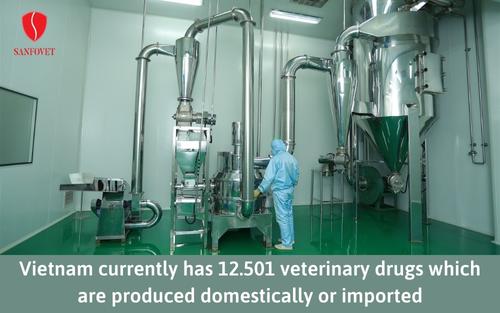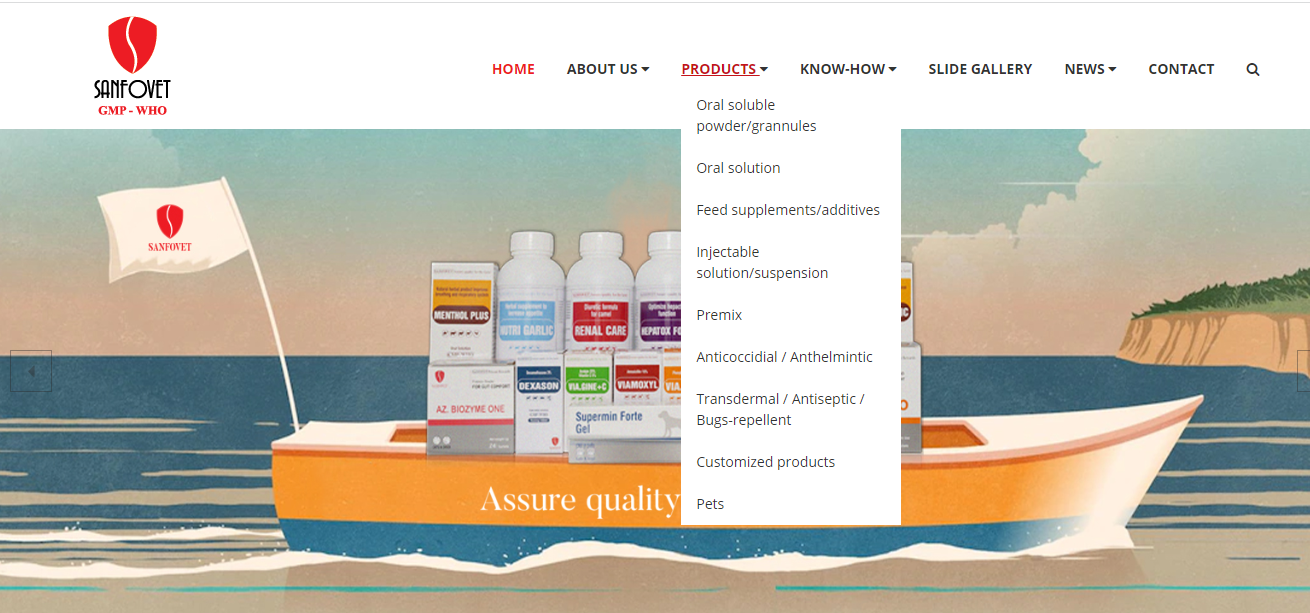In livestock production, each epidemic presents its own challenges and complication, namely as the appearance of new diseases, new strains of viruses... This means the industry needs to adapt to these changes. In this article, we would like to inform you all the drug classes that are readily available in the market.
Veterinary medicine market in Vietnam
- According to the most recent statistics of the Vietnam Veterinary Medicine Association, there are 75 companies and factories that manufacture and distribute veterinary medicines. According to the Department of Animal Health, Vietnam currently has 12.501 veterinary drugs which are produced domestically or imported. The above data is expected to meet over 80% of the demand.

- There are 1,145 veterinary drugs of Vietnam which are exported to 40 different countries. This number speaks volume about domestically produced veterinary drugs.
- Vietnam is an agricultural country, according to statistics, each province has an average of 200 veterinary shops/pharmacies and up to 2,000 veterinary drugs contain antibiotic active ingredients.
Classified veterinary medicines under different dosage forms
There are many different ways to classify veterinary drugs, but the most common way is to classify them by dosage form. According to the Veterinary Pharmacology Textbook - Hanoi Department of Education and Training, veterinary medicines will include the following types:
- Injectable: in the form of solution, suspension or emulsion that are sterile and administered into the animal's body through different injection routes.
- Powder medicine for injection (including lyophilized preparations): containing one or more pharmaceutical substances and excipients, prepared with an appropriate volume of sterile liquid before used and administered into the animal body by injection.
- Eye drops: consisting of one or more active ingredients, prepared in the form of a solution, suspension or in dry form (powder, lyophilized powder, tablets), dissolved or dispersed into a solution and directly apply to animals’ eyes.
- Ear drops: consisting of one or more active ingredients prepared in the form of a solution, suspension or emulsion to be inserted into the animal's ear cavity.
- Nasal drops, nasal spray: consisting of one or more active ingredients prepared in the form of solution, suspension or emulsion for instillation or injection into animals' nasal cavity.
- Oral soluble powder: are made in form of small, dry granules, containing one or more types of active ingredients and excipients, administered orally.
- Oral soluble grannules: made in the form of small granules and admistered orally via drinking water or feed.
- Oral solution: containing one or more pharmaceutical substances dissolved in a solvent or a mixture of many solvents, administred orally.
- Oral suspension: containing insoluble solid pharmaceutical substances evenly dispersed in the form of very small particles in water or oil derivatives, administered orally.
- Oral emulsions: prepared by using an emulsifier to evenly mix two insoluble liquids, administered orally.
- Medicines for external use: are prepared in soft, homogeneous form, including: ointments, pastes, creams, gels used to apply to the skin and mucous membranes...
- Tablets: are made in the form of tablets containing one or more pharmaceutical ingredients and excipients. Tablets comes in with many different formats and sizes, each tablet is a unit of dosage that is administered into the animal's body in different ways depending on the therapeutic purpose.
- Capsules: are made in the form of a capsule containing one or more active ingredients and excipients. Each capsule is a unit that is administered orally to animals.
- Chemincals derivatives used in veterinary medicine: are products of chemical origin used with the purpose of preventing diseases, diagnosing medical conditions, sterilizing wounds, disinfecting barns, equipments and surrounding environment for livestocks.
Classifed veterinary medinces under their intended use
In addition to the method mentioned above, veterinary medicines can also be classified via their purposes of use. This is commonly being applied by many veterinary medicines distributors. This methold will sort different medicines groups into their purpose of use, making it easier to for veterinary practitioners and users.

On this note, let's find out which type of medices that Sanfovet is currently providing:
- Antibiotic suspension for injection
- Antibiotic solution for injection
- Oral antibiotic powder
- Oral antibiotic solution
- Supplements, antipyretic, anti-inflammatory
- Anticoccidial and anthelmintics in the form of injectable solution, powder
- Feed additives
- Hormone replacement or regulation
- Disinfectants
- Insecticide.

